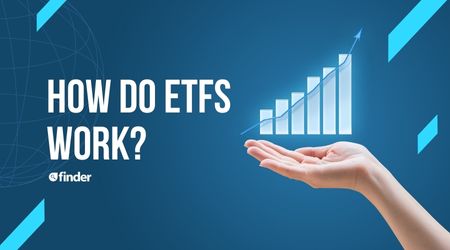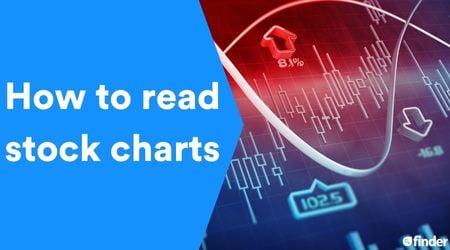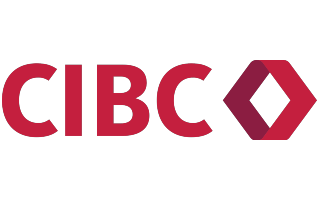Chasing an IPO after it has launched is risky. Prices are often volatile, and if you can only invest in 1 or 2 IPOs, you’re facing that price volatility head-on –– along with the reality that not all IPOs are growth opportunities.
With that in mind, here are some specialized, professionally managed ETFs that track IPOs.
ETFs that invest in IPOs
There are ETFs that invest in stocks of companies when they go public. Others engage in post-IPO trading. Meanwhile, some ETFs invest in the common stocks of small, rapidly growing companies, which may include recent IPOs. And then there are ETFs that track IPOs in a specific sector, such as technology or healthcare.
ETFs that invest in IPOs mitigate their risk of one failing by holding many companies. However, the funds are actively managed and can sell their post-IPO shares at the manager’s discretion.
What is an initial public offering (IPO)?
IPO-tracking ETFs
Here are some funds that track IPOs:
| Fund/Symbol | Sector | Expense Ratio |
|---|---|---|
First Trust US Equity Opportunities ETF (NYSEArca: FPX) | US—Total Market | 0.57% |
First Trust International Equity Opportunities ETF (NasdaqGM: FPXI) | Global Ex-US—Total Market | 0.70% |
Renaissance IPO ETF (NYSEArca: IPO) | US—Total Market | 0.60% |
Renaissance International IPO ETF (NYSEArca: IPOS) | Global Ex-US—Total Market | 0.80% |
Invesco S&P Spin-Off ETF (NYSEArca: CSD) | US—Total Market | 0.62% |
Defiance Next Gen SPAC Derived ETF (NYSEArca: SPAK) | US—Total Market | 0.45% |
Sources: ETF.com
What are the benefits of IPO-tracking ETFs?
When you invest in an individual IPO, you run the risk that the company may not meet your growth expectations. Keep in mind, IPOs are typically surrounded by intense media and investor hype and many don’t end up living up to it. But when you invest in an ETF that invests in newly public companies, you invest in a handful of IPOs handpicked by professional asset managers. This offers some advantages:
- Teams that manage IPO ETFs often have years of experience and access to the latest research tools and resources.
- IPOs are screened for quality, liquidity and other favorable factors.
- IPOs can be dropped from the portfolio if they perform poorly or after they’ve traded for a few years.
What are the risks associated with IPO-tracking ETFs?
Like anything in the world of investing, IPO-tracking ETFs are no guaranteed win. Here are some risks to watch out for:
- IPO-tracking ETFs may be overly concentrated in specific sectors, which can mean substantial losses if those sectors are falling.
- Some ETFs that track IPOs give considerable weight to small- and mid-cap stocks, which can also limit downside risk.
- ETFs that invest in foreign IPOs take on emerging markets risk.
Are ETFs the safest way to invest in IPOs?
It was a record year for IPOs in 2020, with more companies going public than ever before. The coming year should see that trend continue.
But it’s difficult for individual investors to separate good from bad IPOs. So the best choice is to diversify the risk and buy a specialized, professionally managed ETF and a basket of IPOs based on specific criteria.
Consider IPO-tracking ETFS one-stop shopping, where you can get everything you need in one place.
A beginner’s guide to exchange traded funds (ETFs)
Compare stock trading platforms
Finder Score for stock trading platforms
To make comparing even easier we came up with the Finder Score. Trading costs, account fees and features across 10+ stock trading platforms and apps are all weighted and scaled to produce a score out of 10. The higher the score the better the platform - simple.
More on investing

What are the best stocks for beginners with little money to invest?
Want to dive into investing but don’t have much to spend? Take a look at these types of stocks.
Read more…
Meme stocks: What they are and examples of popular stocks
Meme stocks can produce large gains in short periods, but the stocks are volatile.
Read more…
How do ETFs work?
Your guide to how ETFs work and whether this type of investment is right for you.
Read more…
How to read stock charts
Learning how to read stock charts and recognize chart patterns can unlock your success as a trader.
Read more…
What are stocks?
Owning a stock means you own part of a company and can potentially grow your wealth. But there is a risk of loss.
Read more…
How to analyze a stock
Learn how to research stocks and find the right investment opportunities in 4 steps.
Read more…


